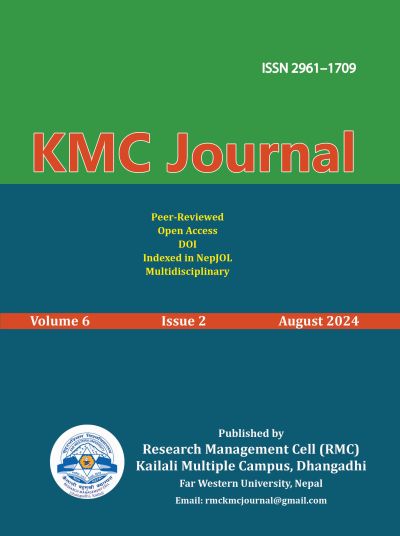Embracing Opportunities and Navigating Challenges: Teaching Pronunciation in the EFL Context of Nepal
DOI:
https://doi.org/10.3126/kmcj.v6i2.68892Keywords:
Challenges, factors, instruction, pronunciation, techniquesAbstract
English is a vital medium for international communication and academic progress in Nepal, making the mastery of pronunciation crucial for students aiming to thrive in a globalized world. This study explores the intricate landscape of pronunciation instruction in English as a Foreign Language (EFL) settings, examining various perspectives, challenges and effective teaching methods. Factors influencing pronunciation acquisition include learners’ native language, exposure to the target language, motivation and instructional strategies. Pronunciation instruction covers phonemes, intonation, stress, rhythm and connected speech, all essential for effective spoken communication. Challenges in teaching pronunciation involve neglect, first language interference and reception issues, highlighting the need for innovative teaching strategies. Effective methods include minimal pairs, modeling and imitation, audio recordings, phonetic symbols, pronunciation drills, visual aids, error correction, contextualization and integration with other language skills. This study emphasizes the importance of a holistic approach to pronunciation instruction, raising awareness of its role in language education, and promoting continuous professional development for educators. Future research should explore innovative pronunciation teaching methods, considering new trends in language education and pedagogical advancements. By prioritizing pronunciation instruction and using evidence-based practices, educators can help learners achieve greater fluency, accuracy and confidence in spoken communication within diverse linguistic and cultural contexts.
Downloads
Downloads
Published
How to Cite
Issue
Section
License

This work is licensed under a Creative Commons Attribution-NonCommercial 4.0 International License.
This license allows reusers to distribute, remix, adapt, and build upon the material in any medium or format for noncommercial purposes only, and only so long as attribution is given to the creator.




